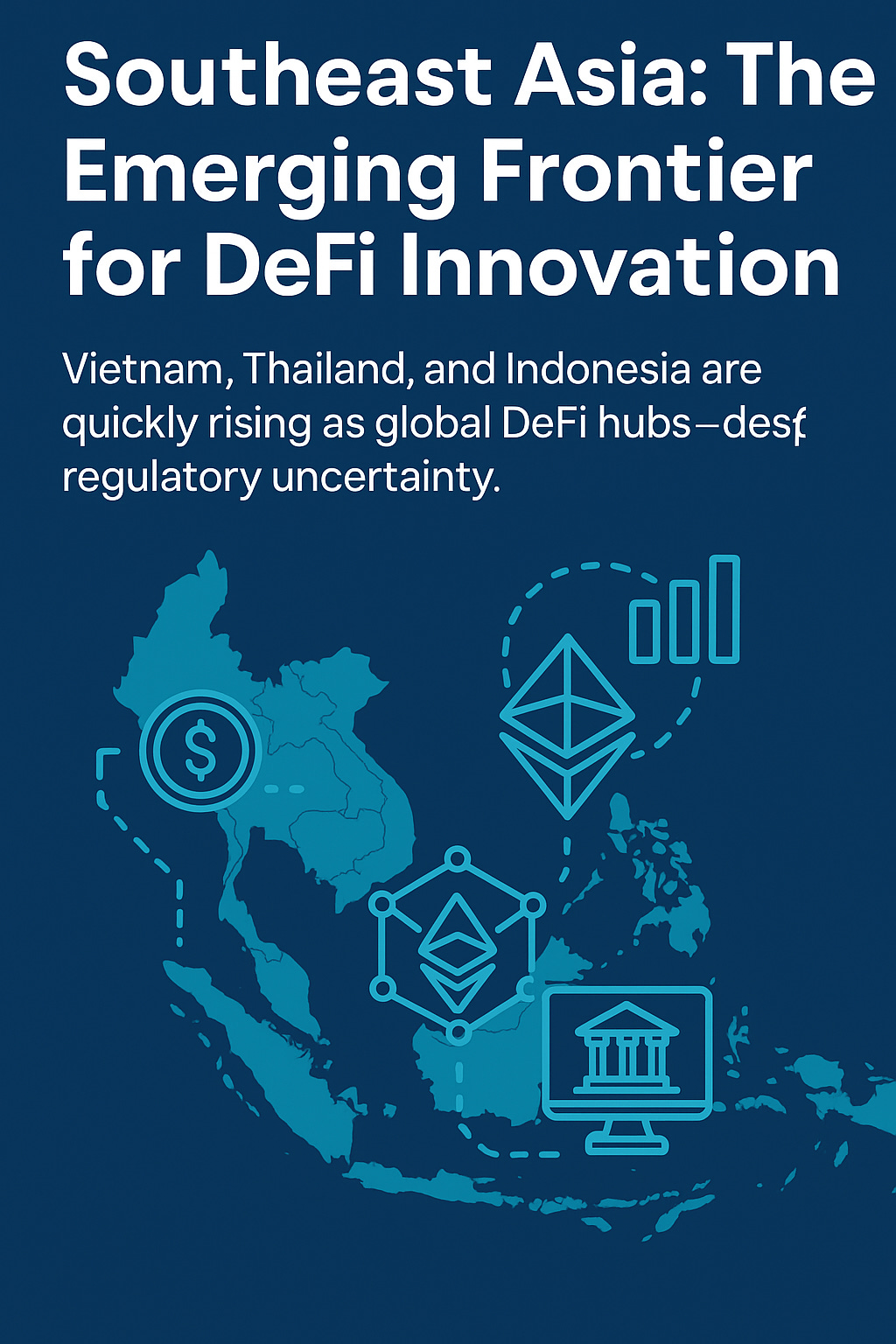DeFi Without Borders: How Southeast Asia Is Quietly Embracing Open Finance
Introduction
While the West debates regulation and institutions remain hesitant, something powerful is quietly unfolding in Southeast Asia: a grassroots DeFi movement that’s steadily gaining traction. From the bustling crypto scenes in Vietnam and the Philippines to rising adoption in Indonesia and Thailand, the region is showing that financial innovation doesn’t need permission — only access.
Why DeFi Resonates in Southeast Asia
Southeast Asia is home to over 680 million people, many of whom remain underserved or entirely unbanked. Traditional finance often excludes the gig economy, freelancers, and the rural population. DeFi, on the other hand, only asks: "Do you have internet and a wallet?"
✅ High mobile penetration
✅ Young, digitally-native populations
✅ Rising distrust in traditional institutions
✅ Booming remittance flows and gig work economy
It’s a perfect cocktail for DeFi adoption.
Country Spotlights
🇻🇳 Vietnam: A Top Crypto Country
Ranked #1 in Chainalysis’ Global Crypto Adoption Index multiple years (Chainalysis, 2023).
Strong local dev scene; platforms and DEXs being built by Vietnamese teams.
Crypto is used not just for speculation, but as an alternative savings and remittance rail.
🇵🇭 Philippines: DeFi for Remittances
10%+ of GDP comes from overseas remittances.
Projects like Stables, Coins.ph, and integrations with RippleNet have made waves.
Crypto remittance tools offer better FX rates, faster settlements, and more control to users (World Bank Remittance Data, 2023).
🇮🇩 Indonesia: Retail-Driven Growth
One of the world’s largest Muslim populations, sparking demand for Sharia-compliant DeFi.
Retail adoption leads the way, often driven via platforms like Tokocrypto or Pintu.
Education is on the rise — local communities are hosting more DeFi-centric events (Indonesia Blockchain Week).
🇹🇭 Thailand: Regulatory Gray Zones, Active Users
Despite regulatory uncertainty, DeFi usage is high among retail investors.
A strong culture of side hustles and digital commerce.
Thai Baht-backed stablecoins (e.g., THT) once showed early promise for localized DeFi (The Block, 2021).
What’s Driving This Quiet Movement?
Financial Inclusion Gaps: DeFi offers a way around poor banking infrastructure.
Crypto as Digital Income: Many SEA users treat crypto as salary, not speculation.
Community-Led Education: Grassroots bootcamps, YouTube influencers, Telegram groups all help fill the knowledge gap.
And unlike some parts of the world where DeFi is largely theoretical or whale-driven, in SEA it’s practical — it's being used to send money home, earn yield, hedge savings, and support families.
Final Thoughts: The DeFi Undercurrent
Southeast Asia might not have the loudest DeFi headlines — but it has the deepest user stories. As the global conversation continues around institutional DeFi, regulations, and CBDCs, the region reminds us that:
"Decentralized finance was built for the people who need it most."
SEA’s quiet DeFi revolution is already underway.
References:
Chain-analysis Crypto Adoption Index 2023
World Bank Remittance Data 2023
The Block (THT & Terra Stable-coin Warning, 2021)
Indonesia Blockchain Week
✍️ Written by AL – exploring the intersection of Web3, DeFi, and the emerging economies shaping tomorrow’s open finance world.




